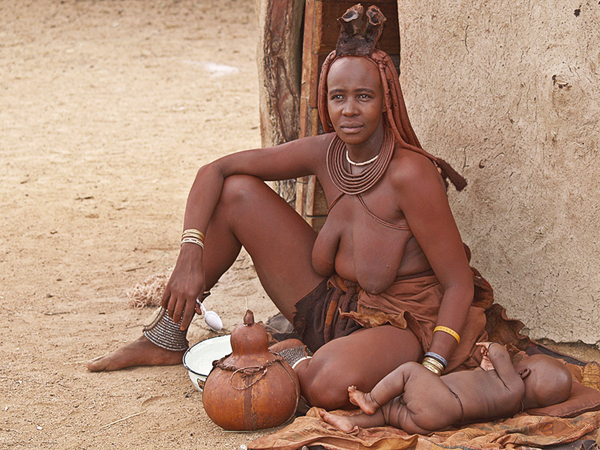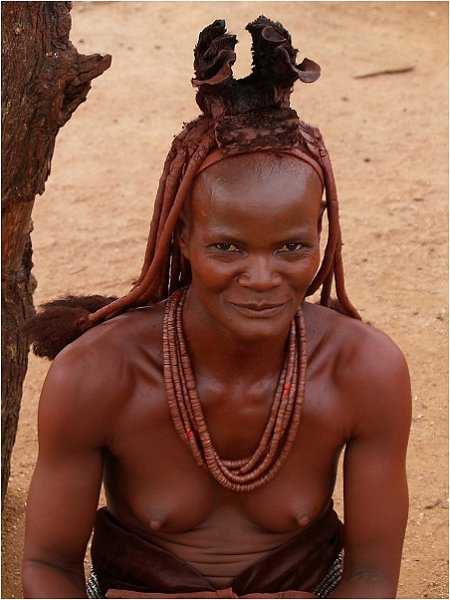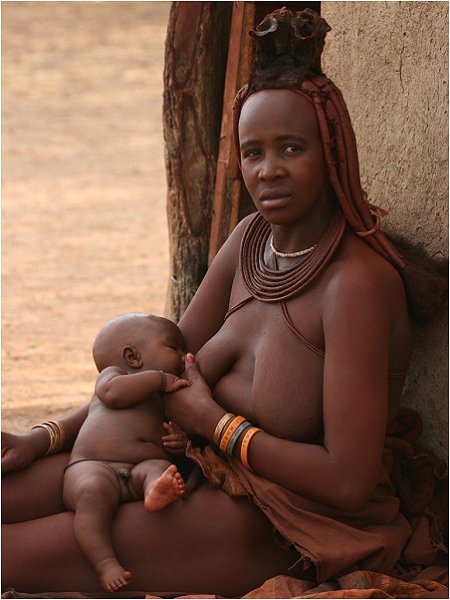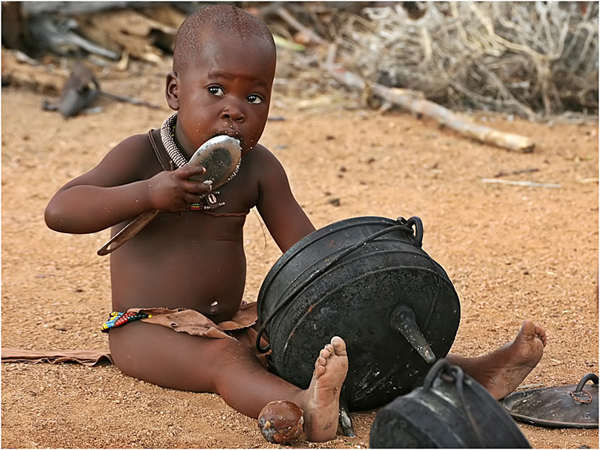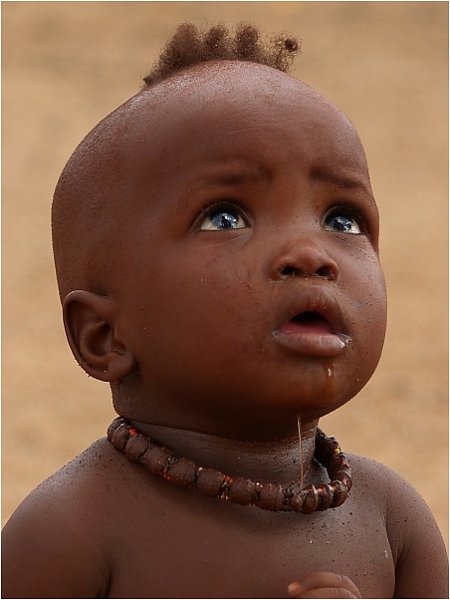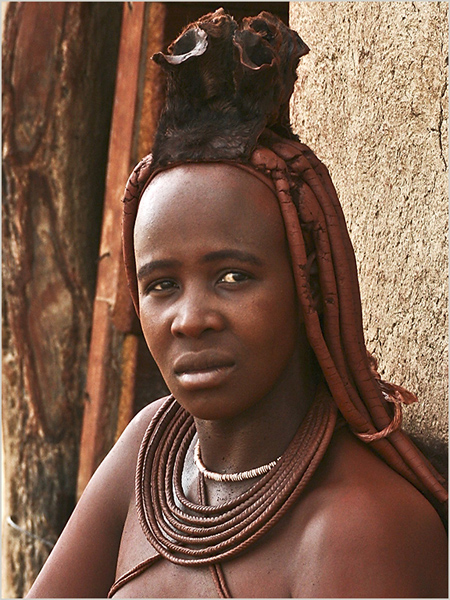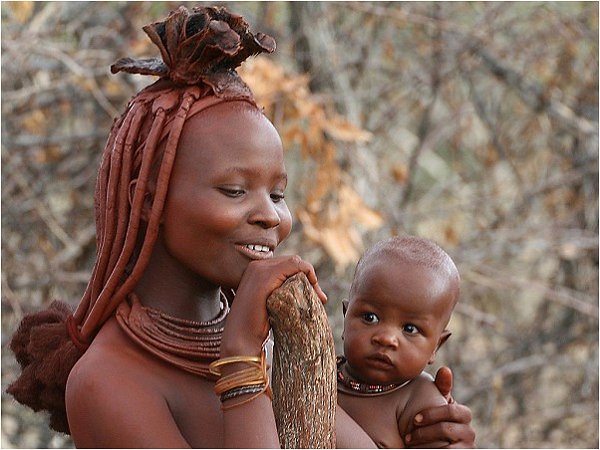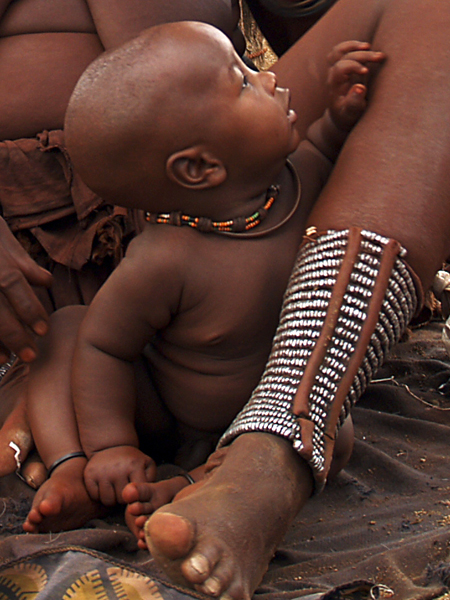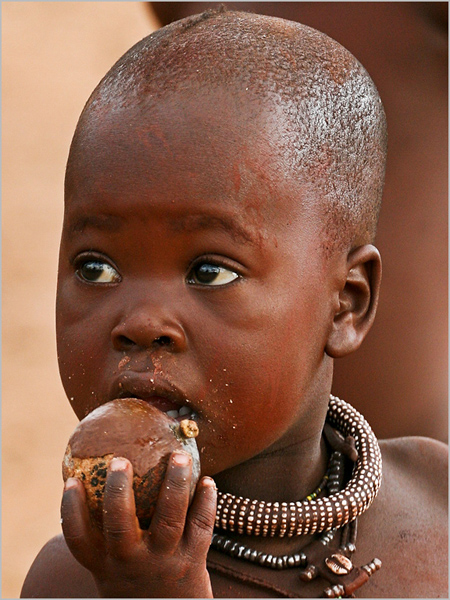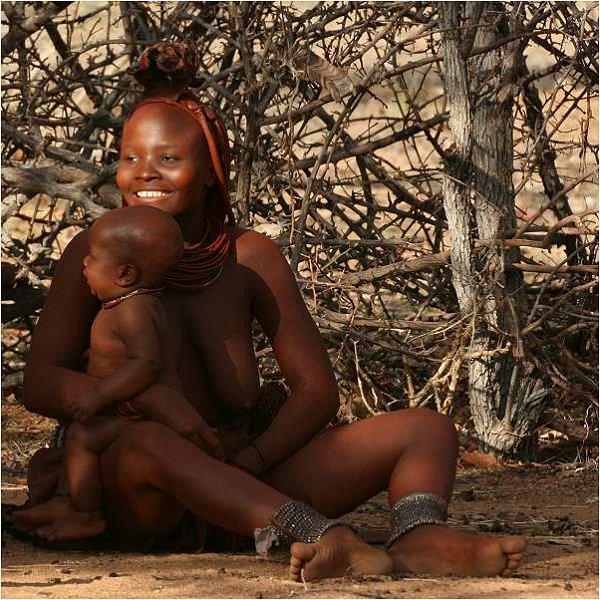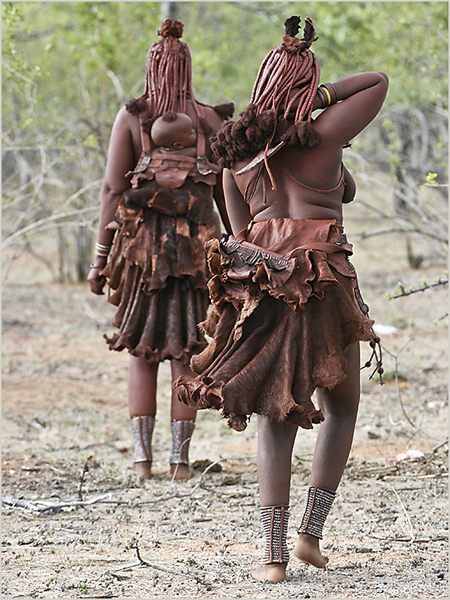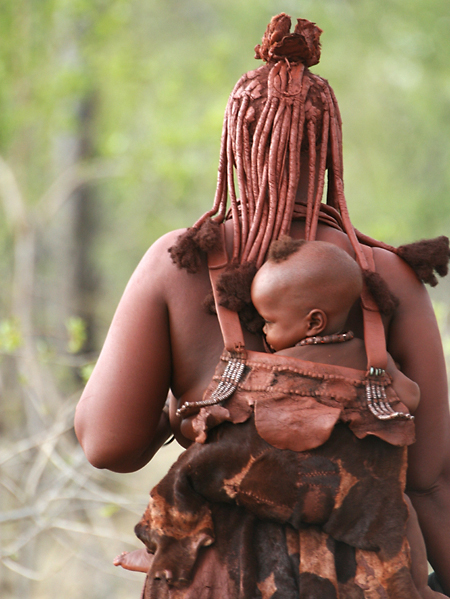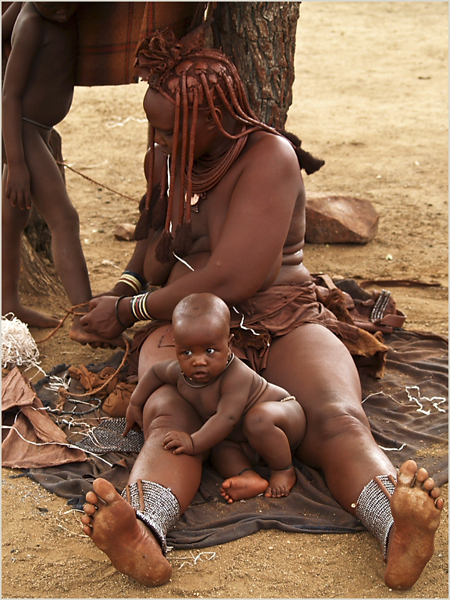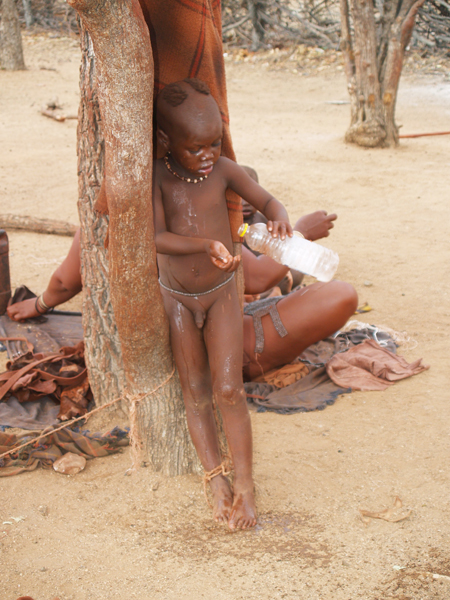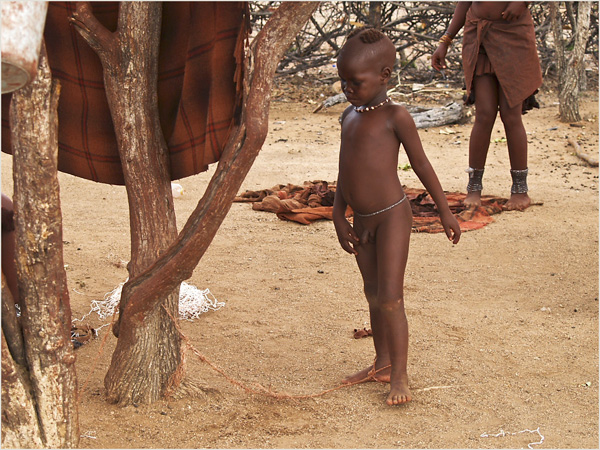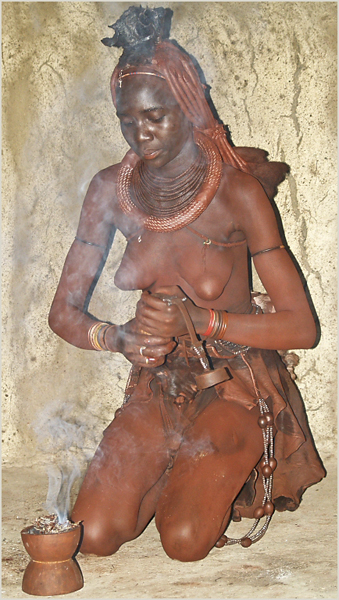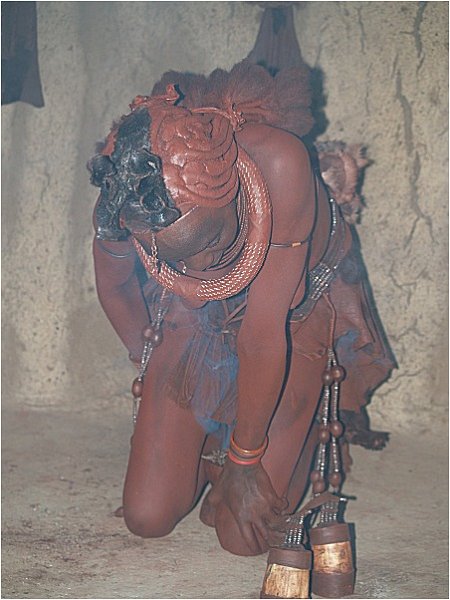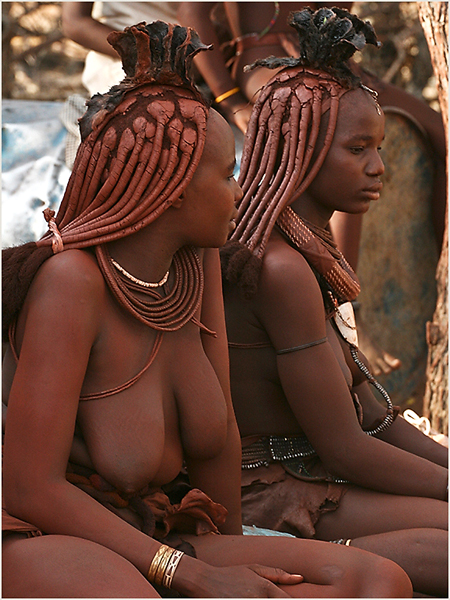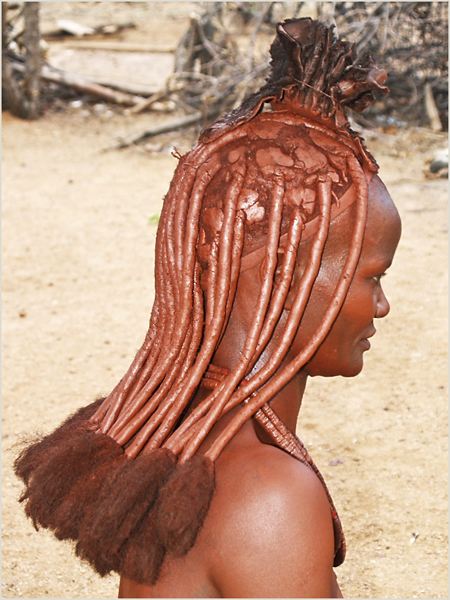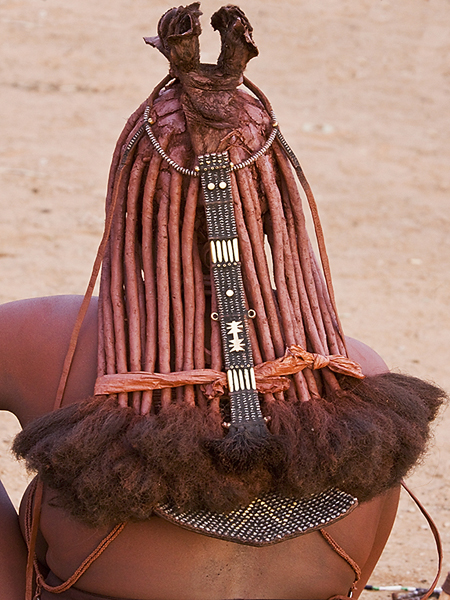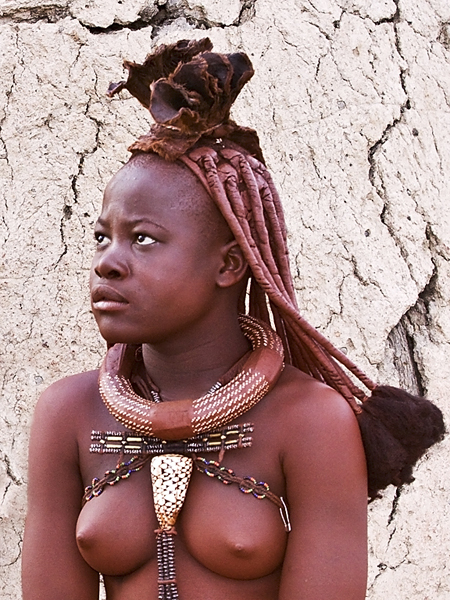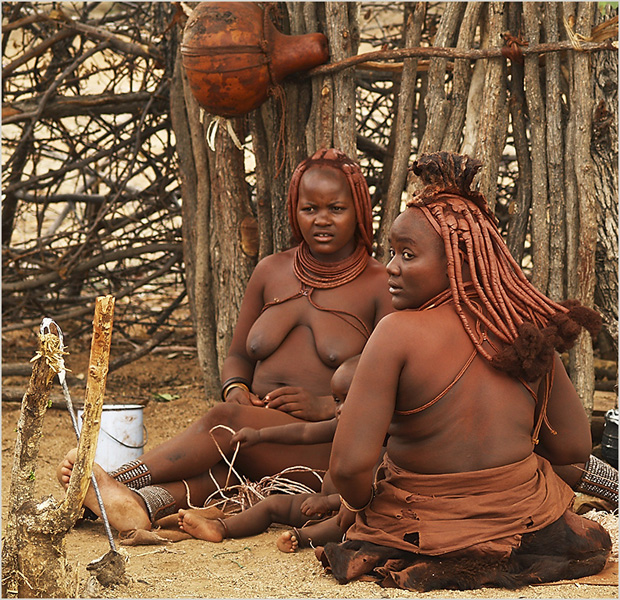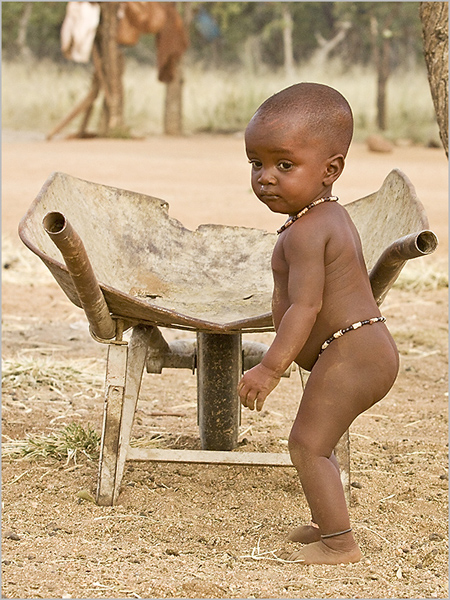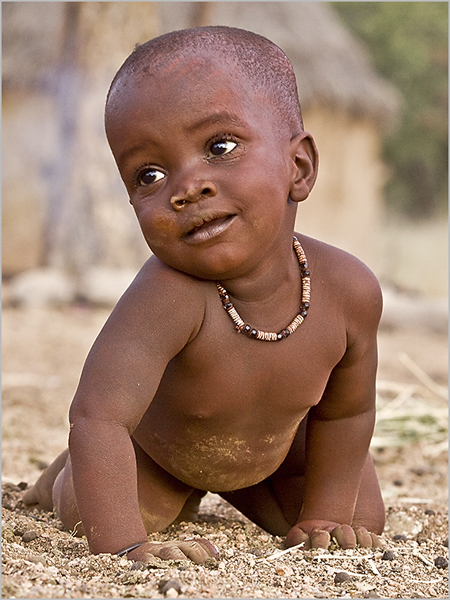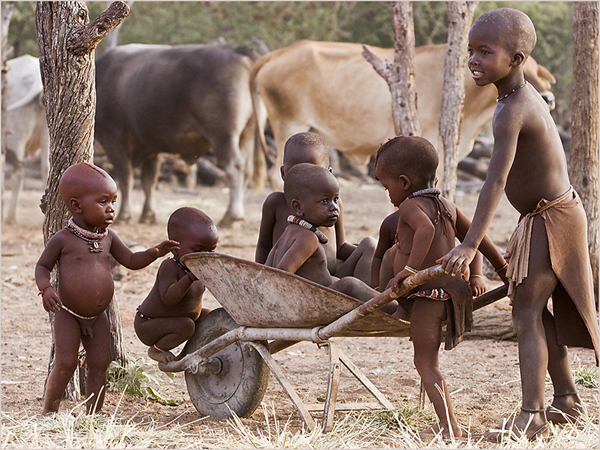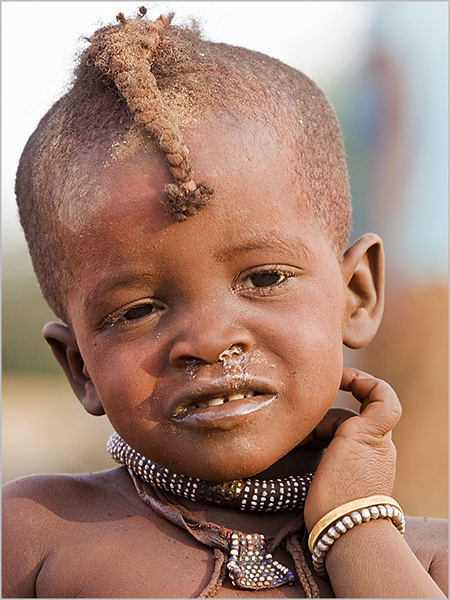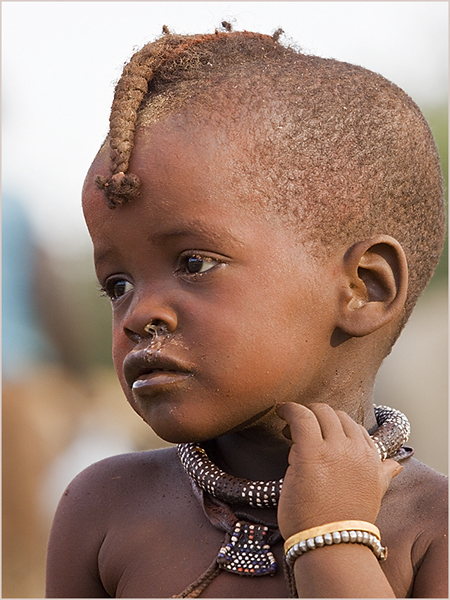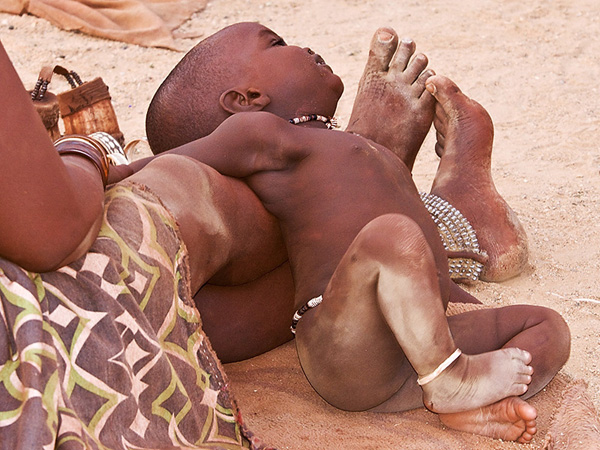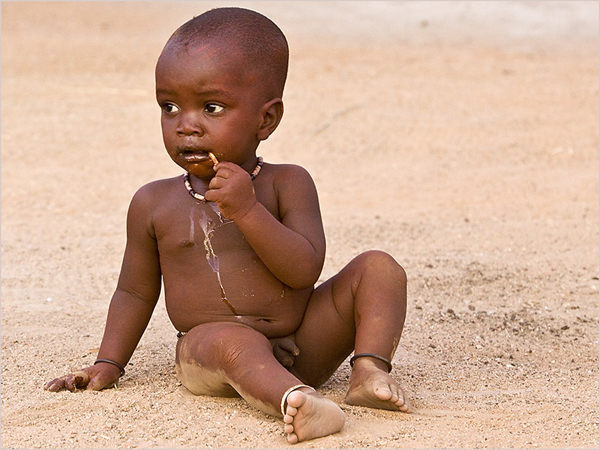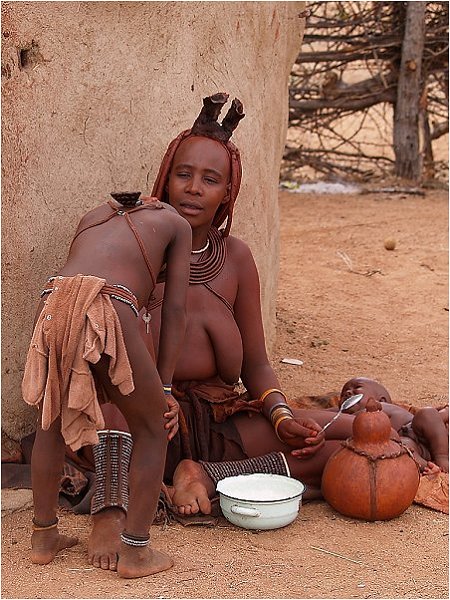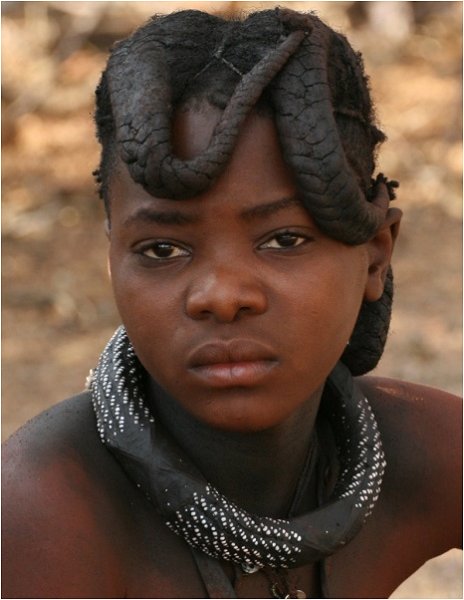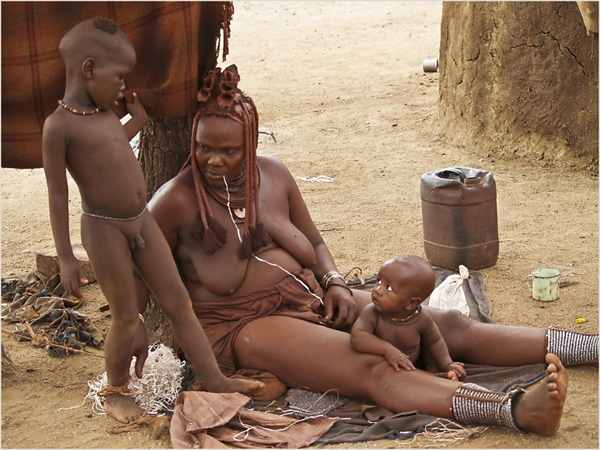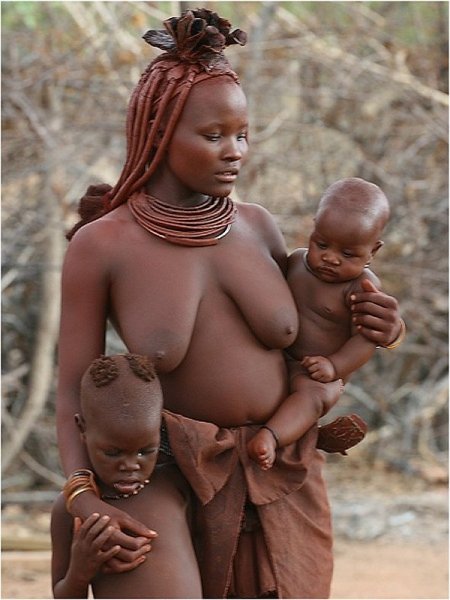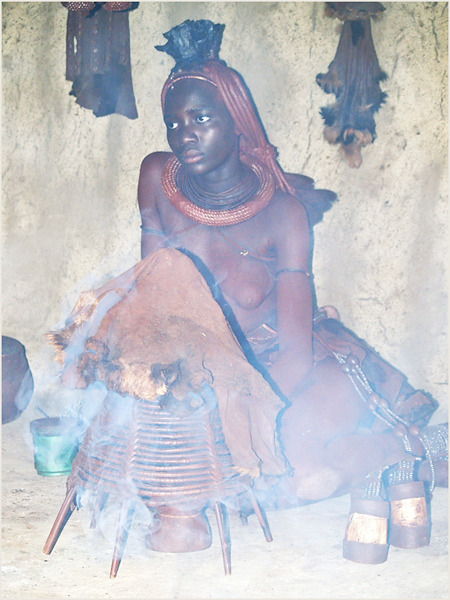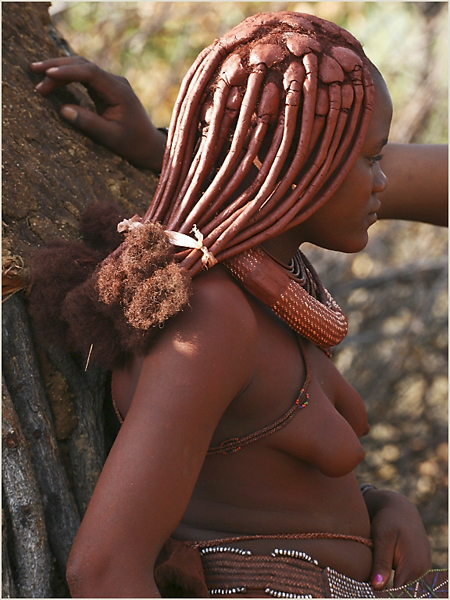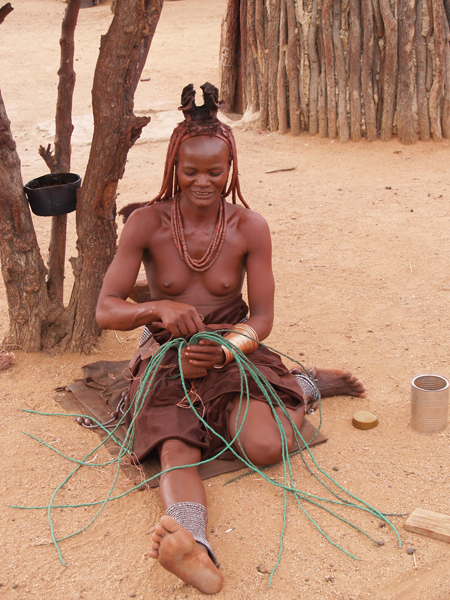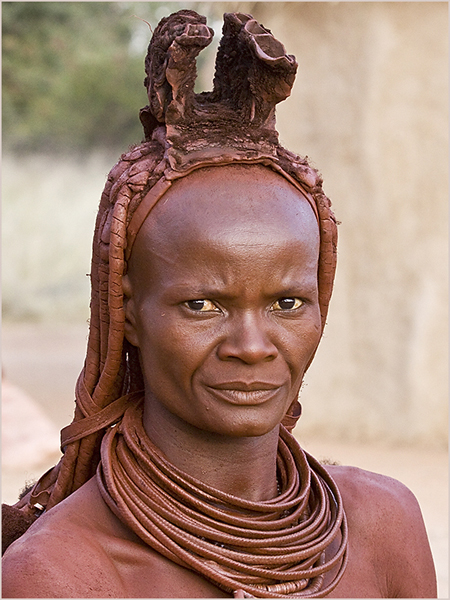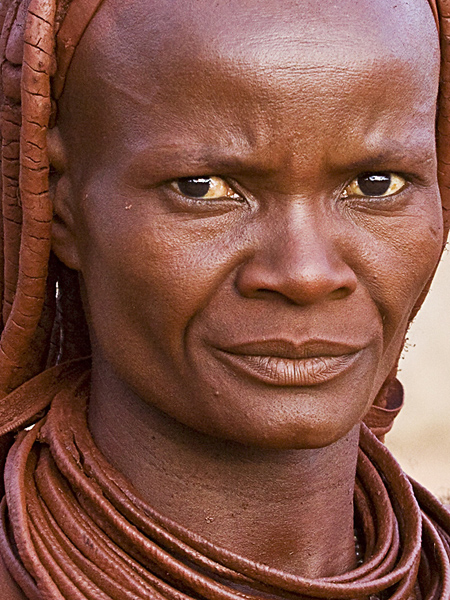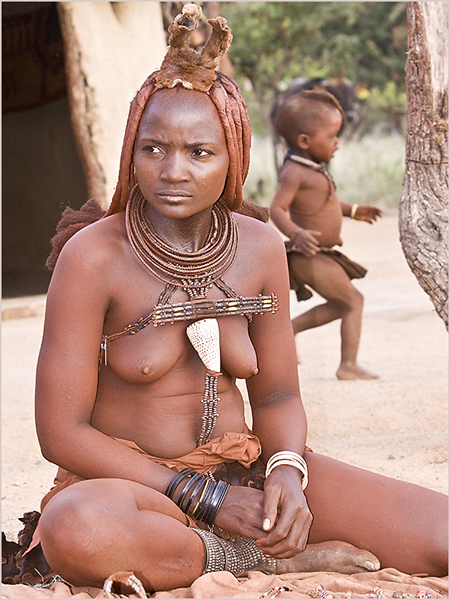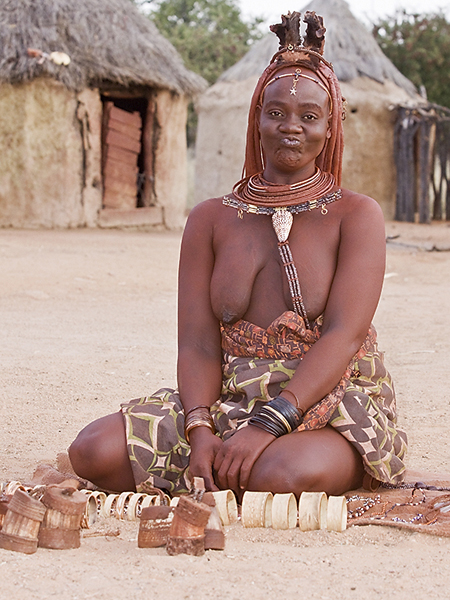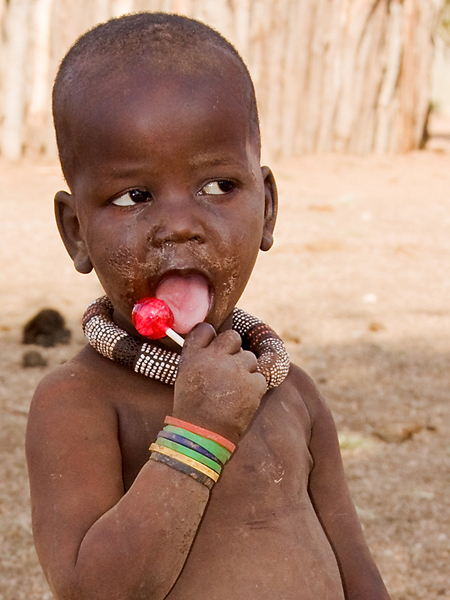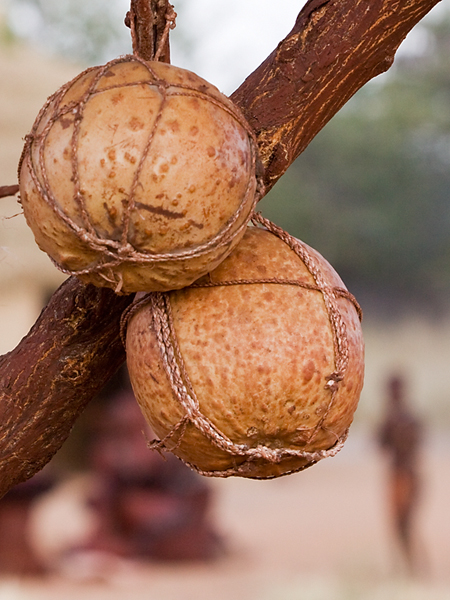
The Ovahimbas of Namibia.
If anyone find naked breasts offensive, please don't look at these
photos!!
This is the way these people live and to me there wasn't anything offensive or ugly.
It is just so natural and part of the beauty of their nature.
|

Taking photos of the Ovahimbas was included in our entry fee to visit the village. Very few of these
photos were posed for and I just took the photos as we walked through the village.
The Ovahimbas
are found in Northern Namibia. An interesting fact is that they never bath or wash themselves with water
at all. They have a very interesting cleaning ritual, which takes a couple of hours. They start cleaning
themselves very early in the morning by burning wild herbs and sit in the smoke. They also clean their
leather clothes with the smoke.
This ritual was demonstrated to us, but the hut was so smoke
filled we almost couldn't breathe.
The photos of the first half of this page was taken in
2006
|

|
|
|
When a young girl or a woman has such a thing around the neck as this young girl, it means that she isn't
married yet.
|
|


|
This mother and baby photo is one of my all time favourite photos. She was so graceful and so beautiful
and most of the time she wasn't even aware that I photographed her.
|







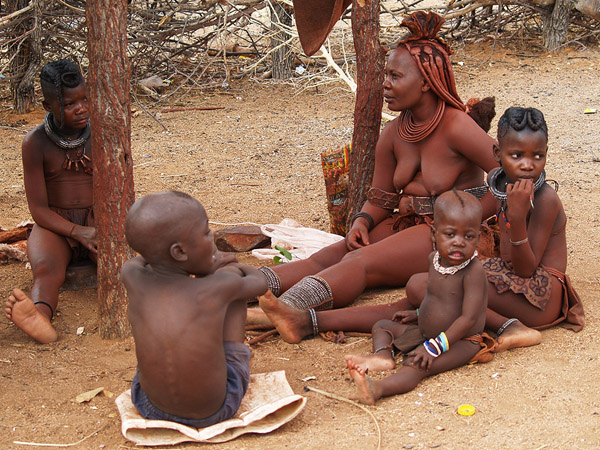 |
|
A mother and her children
|
|


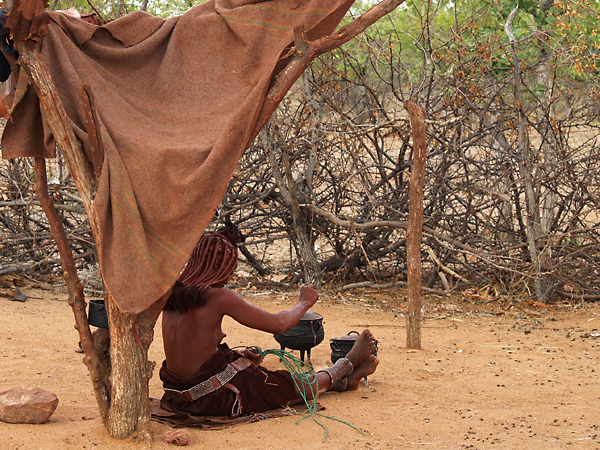 |
|
Ovahimba woman doing traditional craftwork.
|
|

|
|
|
This boy kept wandering off with the tourists visiting the village and his mother tied his ankle with
a length of string and also fastened the string to the tree trunk behind her. He could still move around,
but could not wander off anymore.
|
|



|
|
|
Photo on the right and below, a young girl demonstrated how the cleaning ritual is performed daily.
|
|




|
|
|
The woman on the left was eager to demonstrate to me what she was making.
|
|

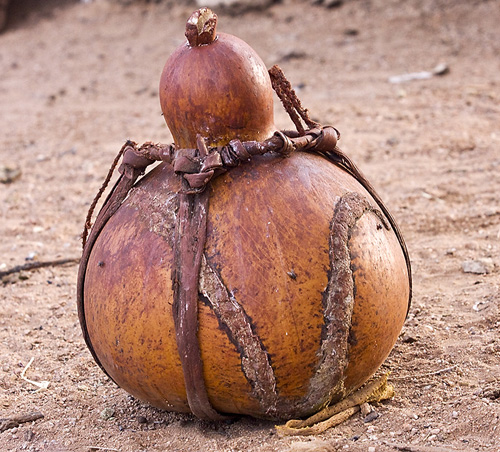 |
|
The Ovahimbas use calabashes like this one as containers for mainly sour milk and drinking water.
|
|

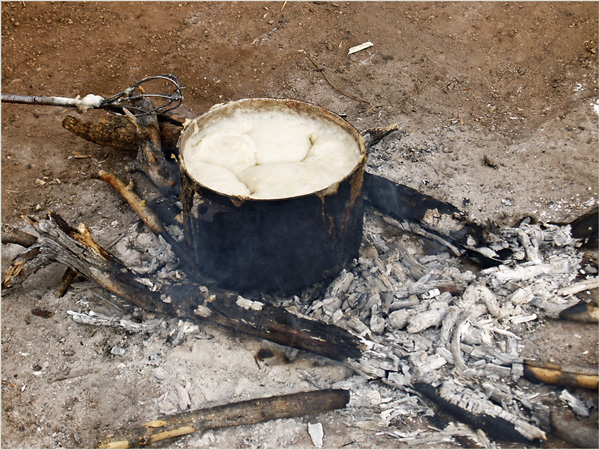 |
|
This is their staple food and it is made of maize meal. We call it pap.
|
|

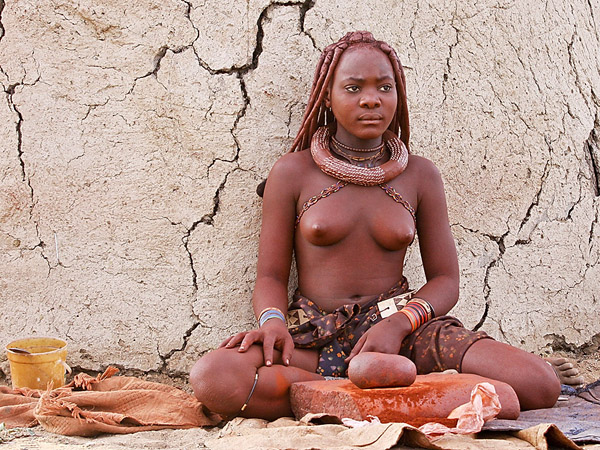 |
|
A young girl grinding ochre. It is like a dry clay and contains hydrated iron oxide. The Ovahimbas mix
the powdered ochre with butter fat and use it on their bodies like a body lotion. It is from the ochre
that their bodies have a reddish brown colour. On my last visit to the Village, I saw that they are now
using Vaseline or petrolium jelly instead of the butter fat.
|
|

 
2009
I returned to the Oase Himba Village with great expectations to photograph the Ovahimba
women and children again. A couple of months before my visit, I was contacted by a book dealer in Windhoek
about a book on the Ovahimbas. The seed was planted and I was seriously thinking about it. When I arrived
at Oase Village with a group of tourists, I immediately noticed a change. There were other groups of
tourists as well and it was difficult to take photos without a tourist in the picture.
I also
noticed a difference in the behaviour of these women. It was like a flee market and the only thing they
were interested in, was to sell their craftwork. It was also as if they didn't want to be photographed
anymore. All tourists pay to visit the village and included in the deal, is the right to take photos,
without having to ask or pay them again. They get paid and get a share of what the tourists pay to visit
the village.
|

|
|
|
In 2006 she was smiling at me when I took a photo of her. In 2009 she wasn't smiling anymore!
|
|


In 2006 these woman were sitting by their own huts, some with their children or in small groups of 2
or 3 women and they were much more relaxed and almost much more innocent. In 2009 they were all sitting
together in big circle, each one tryng to sell her own craftwork to the tourists. It was if one could
see the eagerness to sell their stuff on their faces.
As a photographer, it was almost impossible
to take a good photo of an individual woman.
|

|
|
When the woman on the right pulled a face at me when I wanted to take a photo of her, I immediately changed
my mind about photographing the women in this village any further and I also let go of any plans I might
have had about a book in the future!!!
I then decided I would take photos of the children and
other things in the village, so I wouldn't leave the place without any photos at all.
|
|

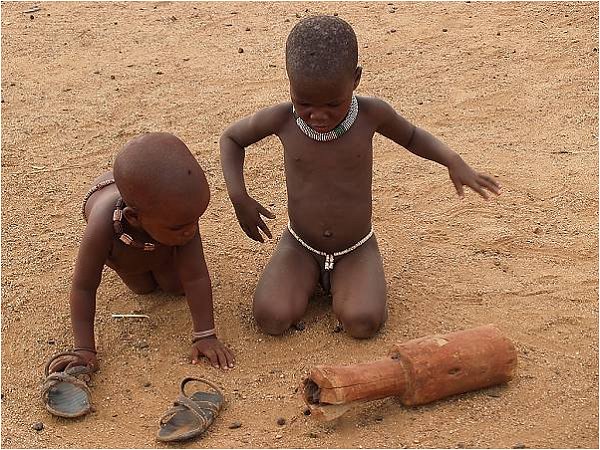 |
|
Himba boys playing in the sand.
|
|






|
|
|
When I was at the Himba Village, I din't realize that all the children that were there at that stage,
were only boys!!! Of all the photos that I took, there were only three teenage girls and no little girls
among the toddlers. This is real strange, so I guess they kept the little girls somewhere else.
|
|

|
I honestly think many the Ovahimbas of Namibia have been spoiled by tourism and by civilization. They
have changed so much and because of this, they also got spoiled by money and a more modern or Western
lifestyle. Please don't get me wrong. I don't want them to suffer and remain poor. I wish for them or
anyone else a much better lifestyle and prosperity, but unfortunately it ended up very bad for some of
the Ovahimbas. They learned to beg, to drink alcohol and many became alcoholics. I have heard that some
are even selling their own belongings to get more money to buy Black Label beer, which seem to be their
favorite. Some women even became prostitutes, just to get more money. This is really sad news to me,
but even more sad to themselves. I honestly feel sorry for them, because I think they are now in a position
where they don't know how to handle all the changes and they are going to loose their own tradition in
the end.
|

|
I still remain hopeful that I will be in a position to travel to some remote area where the Ovahimbas
still live like they have lived for hundreds of years one day and where they haven't been influenced
by tourism yet. Going with a safari or a tour group like I have been doing in 2006 and in 2009, isn't
for me anymore. The photos that I got aren't what I really looked for as I really would like to photograph
them in their natural surroundings and not a place where they are on show for tourists.
|


|
